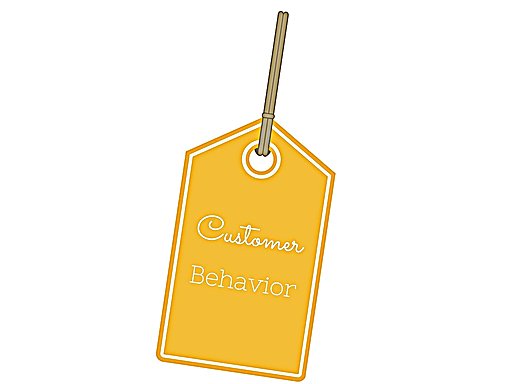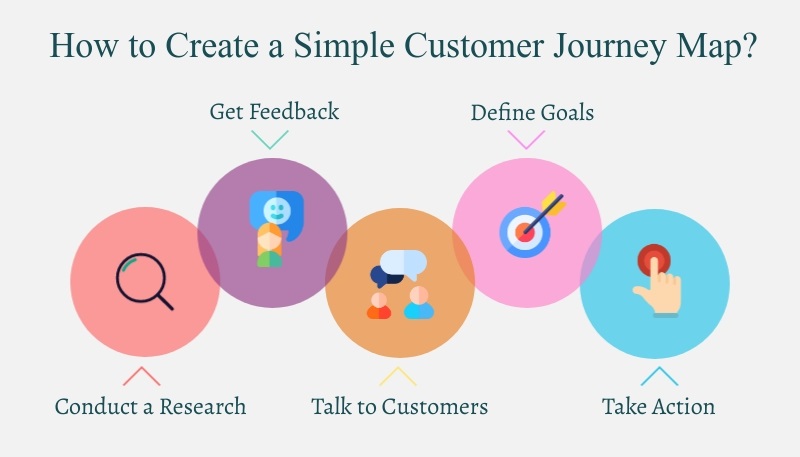Creating a perfect customer journey map can enable your customer support team to focus more on particular issues rather than problems brought on by a less personalized customer journey.
Definition: A customer’s journey is a map that tracks the buyer’s experience. The starter’s block is the point of the first contact with the seller, the finish line is represented by the purchase order. The journey traces the process of engagement.
Contrary to popular belief, however, customer journey mapping does not end with the client placing an order. It’s also about a long-term relationship, trying to map the behavior of a customer after he has received his product.
Ideally, a customer journey map is represented by an infographic to make it easy to understand for key members of your company.
But whatever be its final form, the aim always is to teach organizations more about their customers.
The customer is at the center of every B2C and B2B company, and a map of the customer’s journey gives managers a ringside view of how customers or leads have moved through the sales funnel.
Win New Customers with Customer Journey Mapping
Two things will happen because of the map: The manager can identify opportunities or identify weak points in the funnel to enhance the buying experience.
In today’s digital world, it will also demonstrate to a company how to adapt to the world of mobile, social media, and the web vis-à-vis customer behavior.

Here Is How To Map Customer Journey
Tip 1: Start With Research
To map out your buyer’s journey, you need to get to know about your customer. And for that, research is very important. Most B2B and B2C companies already have some information about users in their database. That can be the starting point. The other way is to collate data from various sources like website analytics, social media, and so on to get to know your customer better.
There’s a simple equation at work here – customer value = business value. This is why your Enterprise needs to focus on customer value by understanding the preferences of buyers. That becomes a key input in customer journey mapping.
Tip 2: Get Feedback From Within Your Company
That’s right. To truly understand your customer, you also need to get inputs from your team. This information can then be used to add another stratum to a customer journey map. Especially, feedback from every touchpoint.
Just as getting the ‘insider’s view’ is necessary, getting the ‘outsider’s view’, too, is crucial. Feedback from customers is an extremely important input for a customer’s journey map.
Tip 3: Talk to Your Customers
At the very basic level, have a feedback form circulated to your customers. Get ‘Support” to call them, even. Most companies don’t do that, thus missing out on crucial info or “outside” perspective. Without an outside view on what’s working and what’s not, the journey map will be “missing an angle” and so accuracy.
Like any other task, mapping a customer’s journey is tied in with your Enterprise’s overall goals. Some specific, some long-term. But always try and understand a customer in correlation with your business goals. The journey mapping, thus, is to be viewed from two ends – from a customer’s perspective and your Enterprise’s view. The aim is to understand what your buyer wants and what your Enterprise is (or wants to) provide.
Tip 4: Define Your Goals For Customer Journey Mapping
Define your goals – why you are mapping your buyer’s journey. They could be:
- The most obvious one: To record end-to-end customer experience.
- To map not only the journey but also touchpoints. (This helps you to identify/prioritize investments in experience/touchpoints).
- For drawing up a customer-oriented marketing plan.
- To look at weaknesses in your CRM process
- For inputs in developing new products and services.
Mapping a client’s journey more often than not throws up his/her motivation in interacting with your brand – what they want and what they expect from your company.
Rule of Thumb: Any knowledge is useless if not shared. Customer journey maps need to be shared across your Enterprise with key members.
Tip 5: Create, Share, Take Action
Create easy-to-understand maps which have recorded the positives and the negatives. These should also illustrate quick fixes and opportunities. Share the map with key stakeholders, and take feedback. Based on all of that, close performance gaps. That’s how you bring in best practices.
An Engine That Drives Customer Intelligence
Oyster is not just a customer data platform (CDP). It is the world’s first customer insights platform (CIP). Why? At its core is your customer. Oyster is a “data unifying software.”
Liked This Article?
Gain more insights, case studies, information on our product, customer data platform


No comments yet.